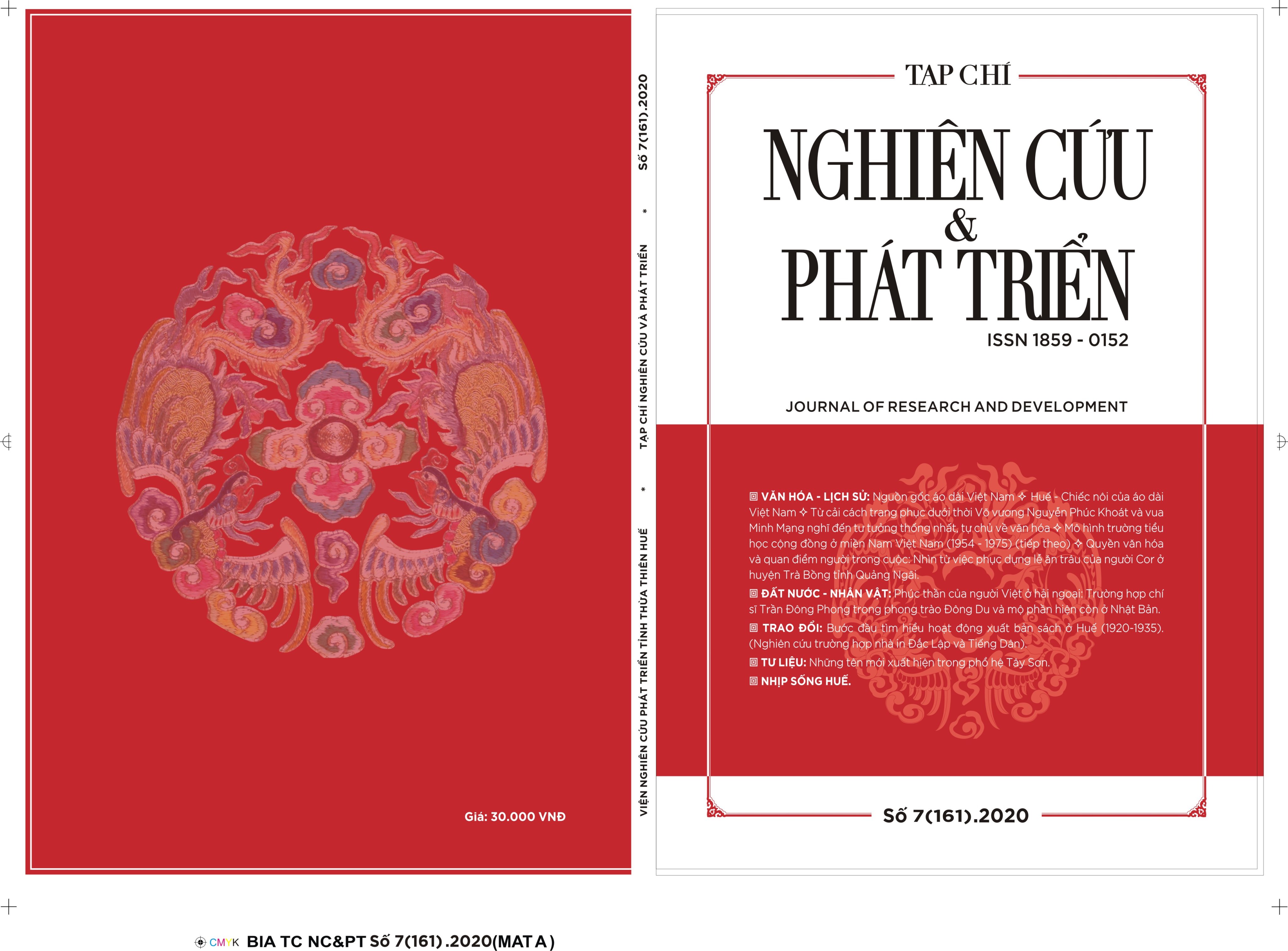Origin of Vietnamese Áo dài (Vietnamese traditional dress).
Abstract
ORIGIN OF VIETNAMESE ÁO DÀI (VIETNAMESE TRADITIONAL DRESS)
The Vietnamese Áo dài was known in two forms, Four-flaps (Áo dài Tứ thân) (still known in Sino-Vietnamese as the Four-flaps) and Five-flaps (Áo dài Ngũ thân), or Five-pieces dress (áo Năm tà) . Four-flaps without buttons, and opens vertically between the 2 front flaps. The Five-flaps with button flap aside, has been renovated into Two-flaps since several decades, but still has a Five-flaps form.
The author of the article stated that the Five-flaps in Thuận Hóa, with such a clear influence from India, must be formed when the influence of the Indo-Islamic civilization was reflected on the Champa culture. And then it was speared in all the country. And especially after the Nguyễn Dynasty reunification in 1802. Up to now, the women’s Two-pieces dress is still in the shape of a Five-pieces dress, which has become the Vietnamese traditional legacy from the XVIth century today. And the male Five-pieces dress, it has remained almost unchanged for many centuries. For centuries, the Áo dài with traditional shapes has been worn solemnly by Vietnamese people receiving guests at all social levels.
The traditional Áo dài, over the past five centuries, has dearly and spiritually carved into the Vietnamese hearts. Although it may have originated from a little of foreign sources, the Vietnamese have created its own unique features so that today it has a special place in the international fashion world, on par with Kimono of Japan and Salwar Kameez of India - Islamic.

